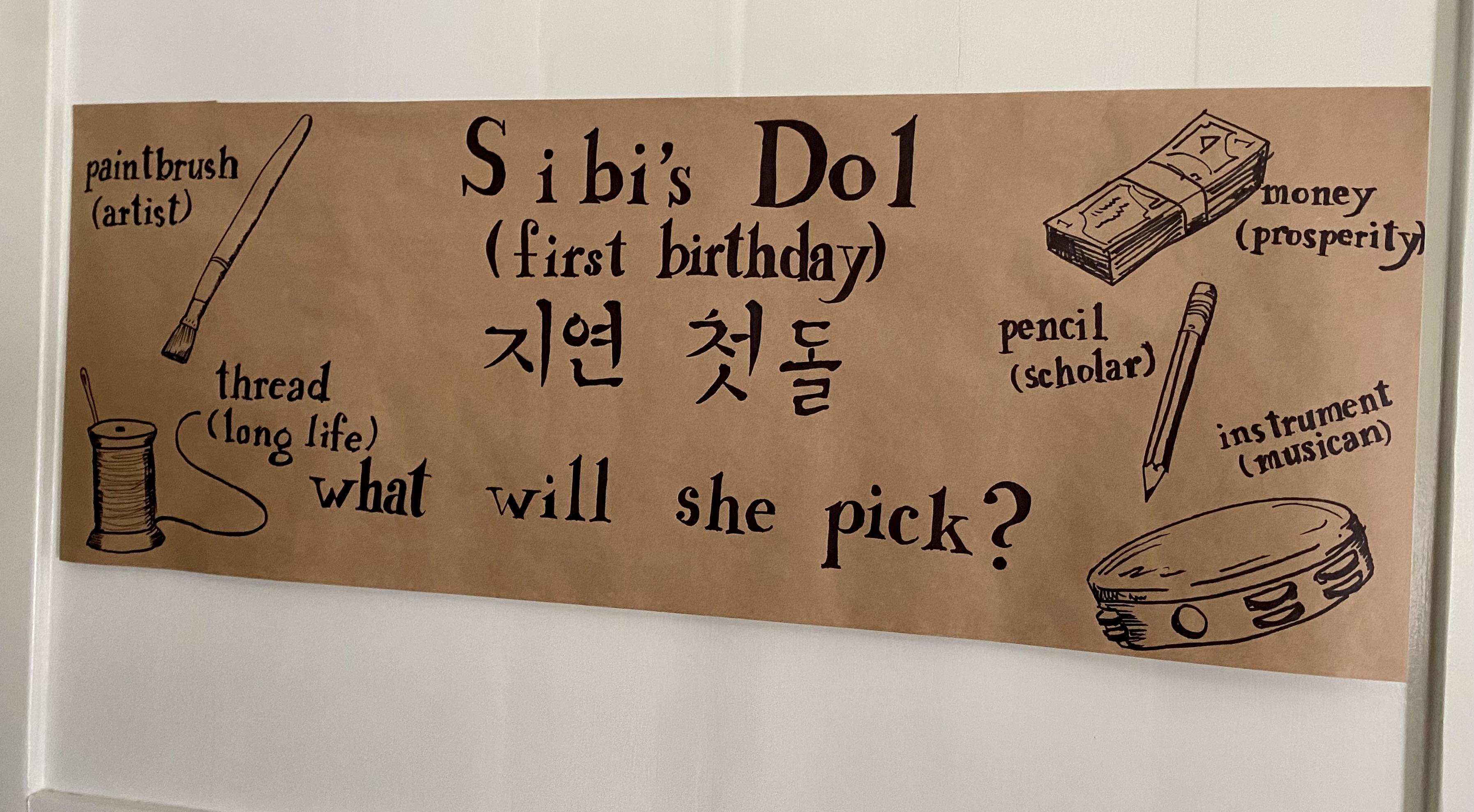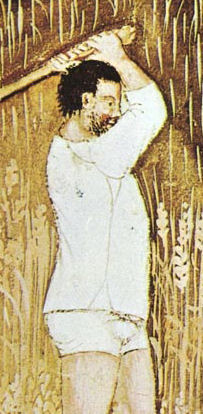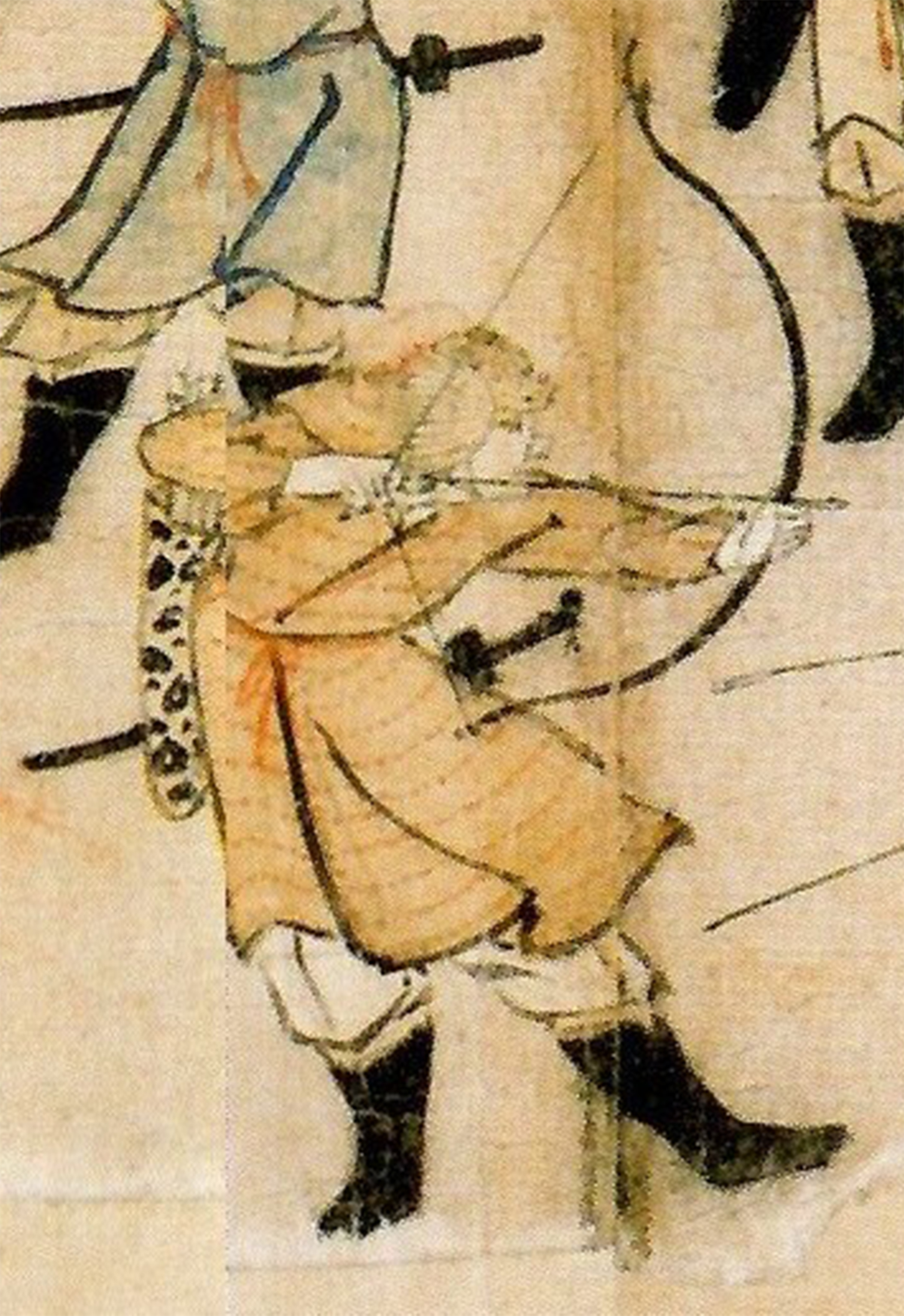|
Kkachi Durumagi
Kkachi durumagi is a children's colorful overcoat in hanbok, traditional Korean clothing, which was worn on Seollal, New Year's Day in the Lunar calendar. It was worn mostly by young boys and literally means "a magpie's overcoat". The garment is also called ''obangjang durumagi'' which denotes "an overcoat of five directions". It was worn over ''jeogori'' (a jacket) and '' jokki'' (a vest) while the wearer could put ''jeonbok'' (a long vest) over it. ''Kkachi durumagi'' was also worn along with headgear such as ''bokgeon'' (a peaked cloth hat), ''hogeon'' (peaked cloth hat with a tiger pattern) for young boys or ''gulle'' (decorative headgear) for young girls. Etymology and color The name is composed of the two words in Korean; ''kkachi'' referring to Korean magpie and ''durumagi'', a type of overcoat. In Korean mythology, magpies are regarded as auspicious messenger delivering good news but also a provider of prosperity and development. The date before ''Seollal'' has been referre ... [...More Info...] [...Related Items...] OR: [Wikipedia] [Google] [Baidu] |
Overcoat
An overcoat is a type of long coat (clothing), coat intended to be worn as the outermost garment, which usually extends below the knee. Overcoats are most commonly used in winter when warmth is more important. They are sometimes confused with or referred to as topcoats, which are shorter and end at or above the knees. Topcoats and overcoats together are known as outercoats. Unlike overcoats, topcoats are usually made from lighter weight cloth such as gabardine or covert, while overcoats are made from heavier cloth or fur. History In many countries, coats and gowns reaching below the knee have been worn for centuries, often for formal wear, formal uses, establishing either social status or as part of a professional or military uniform. In the 17th century, the overcoat became widely stylized and available to the different classes. In the Western world, the general profile of overcoats has remained largely unchanged for a long time. During the Regency era, Regency, the fashion w ... [...More Info...] [...Related Items...] OR: [Wikipedia] [Google] [Baidu] |
Doosan Encyclopedia
''Doosan Encyclopedia'' is a Korean language encyclopedia published by Doosan Donga (두산동아). The encyclopedia is based on the ''Dong-A Color Encyclopedia'' (동아원색세계대백과사전), which comprises 30 volumes and began to be published in 1982 by Dong-A Publishing (동아출판사). Dong-A Publishing was merged into Doosan Donga, a subsidiary of Doosan Group, in February 1985. The ''Doosan Encyclopedia'' is a major encyclopedia in South Korea. Digital edition EnCyber The online version of the ''Doosan Encyclopedia'' was named EnCyber, which is a blend of two English words: ''Encyclopedia'' and ''Cyber''. The company has stated that, with the trademark, it aims to become a center of living knowledge. EnCyber provides free content to readers via South Korean portals such as Naver. Naver has risen to the top position in the search engine market of South Korea partially because of the popularity of EnCyber encyclopedia. When Naver exclusively contracted Doosan Do ... [...More Info...] [...Related Items...] OR: [Wikipedia] [Google] [Baidu] |
Dopo (clothing)
Dopo (Kor. 도포, Chin. 道袍, lit. "Taoist robe") is a variety of '' po'', or overcoat in hanbok (한복), which was first worn in the middle of the Joseon since the 16th century. The dopo was mostly worn by male Confucian scholars called ''seonbi'' (선비) during the Joseon period. It was also worn by Kings and princes and government officers. The dopo held a strong Confucianism value. It was worn as an everyday outer garment by Neo-Confucian scholars, who wore it as an official form of clothing or as a ritual clothing. It was also an ordinary robe worn by the court officials. Since the 1894 reform, all varieties of po with wide sleeves, including the dopo, were prohibited to be worn by King Gojong and instead people had to wear the durumagi (두루마기). Construction and design The dopo is a long over-coat ( po) with V-neck and wide sleeves. It was long enough to reach the ankle of his wearer. The white color ''dopo'' was typically worn for ordinary use while the lig ... [...More Info...] [...Related Items...] OR: [Wikipedia] [Google] [Baidu] |
Jeogori
(; ) is a basic upper garment of the , a traditional Korean garment, which has been worn by both men and women. Men usually wear the with a '' baji'' or pants while women wear the with '' chima'', or skirts. It covers the arms and upper part of the wearer's body. Etymology The has been worn since ancient times and went by a variety of names such as (), (), and () in the Three Kingdoms period (57 BC – 668 AD). Although it is unknown when the term began to be used to refer to the garment, it is assumed to have appeared in the late Goryeo period around King Chungnyeol's reign. The first historical document to mention the ' is in the () of Queen Wongyeong, which was a funeral ceremony for carrying the coffin out of the palace. The document written in 1420 during the second reign of Sejong the Great records () and (). However, it is not clear whether the record is a hanja (Chinese character) transliteration of a Korean word or Mongolian influence. Before the Goryeo peri ... [...More Info...] [...Related Items...] OR: [Wikipedia] [Google] [Baidu] |
Saekdongot
The ''saekdongot'' is a type of hanbok, Korean traditional clothing, with colorful stripes by patchworking. It began to be used for hanbok since the Goryeo period (918 – 1392). The name literally means "many colored (''saekdong'') clothes (''ot'')" in Korean. Saekdong reminds one of the rainbow, which in turn evokes thoughts of children's pure dreams. It was usually worn by children from the age of one to seven year old. Such appliances of saekdong has been used throughout hanbok such as ''jeogori'' (a short jacket with sashes), ''magoja'' (a buttoned jacket), ''durumagi'' (an overcoat) and among other garments. Gallery Image:Korean clothing for young boy-01.jpg, ''Saekdong jeogori'' worn by a young boy Image:Korean clothing-Hanbok-Obangjang durumagi-01.jpg, ''Kkachi durumagi'' Image:Hanbok-female clothing-01.jpg, ''Saekdong jeogori'' for female adults on the right Image:Korean costume-Hanbok-children.jpg, ''Saeongdong jeogori'' and ''saekdong gulle'' (hat) See also *Gulle, a ... [...More Info...] [...Related Items...] OR: [Wikipedia] [Google] [Baidu] |
Durumagi
(), also (), (), (), is a variety of , or overcoat, in , the Korean traditional garment. It is a form of outwear which is usually worn as the topmost layer of clothing; that is it worn over (jacket) and (pants). History The origin of traces back to at least the Three Kingdoms of Korea, where it originated from a long coat worn by the northern nomadic clothing to fend off cold weather in ancient times. Tomb murals from Goguryeo were primarily painted in two regions, Ji'an () and Pyeongyang, which are the second and third capitals of the Goguryeo from the middle of the 4th to the middle of the 7th centuries respectively. The paintings datings from this period in the region of Jian typically shows the characteristics of the people of Goguryeo in terms of morals and customs while those in the regions of Pyeongyang would typically show Korean dress, including figures dressed in nomadic style had governed this geographical region for approximately 400 years. According Samuel ... [...More Info...] [...Related Items...] OR: [Wikipedia] [Google] [Baidu] |
Doljanchi
''Dol'' or ''doljanchi'' is a Korean tradition that celebrates the first birthday of a baby. This ceremony blesses the child with a prosperous future and has taken on great significance in Korea. The birthday babies wear a hanbok and a traditional hat: a ''jobawi'' or ''gulle'' for baby girls and a ''bokgeon'' or ''hogeon'' (호건) for baby boys. History In the past, the death rates for children were high and many children died before their first birthday, so it was an important milestone for the baby and parents. The whole village used to celebrate a baby's first birthday, sharing food and wishing for long life and fortune for the baby. It could also define who they would be when they grow older. Doljabi (돌잡이): fortune telling custom The highlight of the dol (돌) is a custom called the doljabi (돌잡이) where the child is placed in front of a table of foods and objects such as string, paint or calligraphy brushes, ink, and money. The child is then urged to pick up ... [...More Info...] [...Related Items...] OR: [Wikipedia] [Google] [Baidu] |
Saekdong
The ''saekdongot'' is a type of hanbok, Korean traditional clothing, with colorful stripes by patchworking. It began to be used for hanbok since the Goryeo period (918 – 1392). The name literally means "many colored (''saekdong'') clothes (''ot'')" in Korean. Saekdong reminds one of the rainbow, which in turn evokes thoughts of children's pure dreams. It was usually worn by children from the age of one to seven year old. Such appliances of saekdong has been used throughout hanbok such as '' jeogori'' (a short jacket with sashes), '' magoja'' (a buttoned jacket), '' durumagi'' (an overcoat) and among other garments. Gallery Image:Korean clothing for young boy-01.jpg, ''Saekdong jeogori'' worn by a young boy Image:Korean clothing-Hanbok-Obangjang durumagi-01.jpg, '' Kkachi durumagi'' Image:Hanbok-female clothing-01.jpg, ''Saekdong jeogori'' for female adults on the right Image:Korean costume-Hanbok-children.jpg, ''Saeongdong jeogori'' and ''saekdong gulle'' (hat) See also *Gul ... [...More Info...] [...Related Items...] OR: [Wikipedia] [Google] [Baidu] |
Gusset
In sewing, a gusset is a triangular or rhomboidal piece of fabric inserted into a seam to add breadth or reduce stress from tight-fitting clothing. Gussets were used at the shoulders, underarms, and hems of traditional shirts and chemises made of rectangular lengths of linen to shape the garments to the body. Gussets are used in manufacturing of modern tights and pantyhose to add breadth at the crotch seam. As with other synthetic underwear, these gussets are often made of moisture-wicking breathable fabrics such as cotton, to keep the genital area dry and ventilated.US 20030196252 , Sara Blakely, "Two-ply body-smoothing undergarment", issued 2003-10-23 Preve ... [...More Info...] [...Related Items...] OR: [Wikipedia] [Google] [Baidu] |
BBC News
BBC News is an operational business division of the British Broadcasting Corporation (BBC) responsible for the gathering and broadcasting of news and current affairs in the UK and around the world. The department is the world's largest broadcast news organisation and generates about 120 hours of radio and television output each day, as well as online news coverage. The service maintains 50 foreign news bureaus with more than 250 correspondents around the world. Deborah Turness has been the CEO of news and current affairs since September 2022. In 2019, it was reported in an Ofcom report that the BBC spent £136m on news during the period April 2018 to March 2019. BBC News' domestic, global and online news divisions are housed within the largest live newsroom in Europe, in Broadcasting House in central London. Parliamentary coverage is produced and broadcast from studios in London. Through BBC English Regions, the BBC also has regional centres across England and national news c ... [...More Info...] [...Related Items...] OR: [Wikipedia] [Google] [Baidu] |
Korean Mythology
Korean mythology ( ) is the group of myths told by historical and modern Koreans. There are two types: the written, literary mythology in traditional histories, mostly about the founding monarchs of various historical kingdoms, and the much larger and more diverse oral mythology, mostly narratives sung by shamans or priestesses (mansin) in rituals invoking the gods and which are still considered sacred today. The historicized state-foundation myths that represent the bulk of the literary mythology are preserved in Classical Chinese-language works such as ''Samguk sagi'' and '' Samguk yusa''. One state's foundation myth, that of Dan'gun, has come to be seen as the founding myth of the whole Korean nation. State-foundation myths are further divided into northern, such as that of the kingdom of Goguryeo and its founder Jumong, where the founder is the son of a celestial male figure and an earthly female figure, and southern, such as that of the kingdom of Silla and its founder ... [...More Info...] [...Related Items...] OR: [Wikipedia] [Google] [Baidu] |
Durumagi
(), also (), (), (), is a variety of , or overcoat, in , the Korean traditional garment. It is a form of outwear which is usually worn as the topmost layer of clothing; that is it worn over (jacket) and (pants). History The origin of traces back to at least the Three Kingdoms of Korea, where it originated from a long coat worn by the northern nomadic clothing to fend off cold weather in ancient times. Tomb murals from Goguryeo were primarily painted in two regions, Ji'an () and Pyeongyang, which are the second and third capitals of the Goguryeo from the middle of the 4th to the middle of the 7th centuries respectively. The paintings datings from this period in the region of Jian typically shows the characteristics of the people of Goguryeo in terms of morals and customs while those in the regions of Pyeongyang would typically show Korean dress, including figures dressed in nomadic style had governed this geographical region for approximately 400 years. According Samuel ... [...More Info...] [...Related Items...] OR: [Wikipedia] [Google] [Baidu] |







